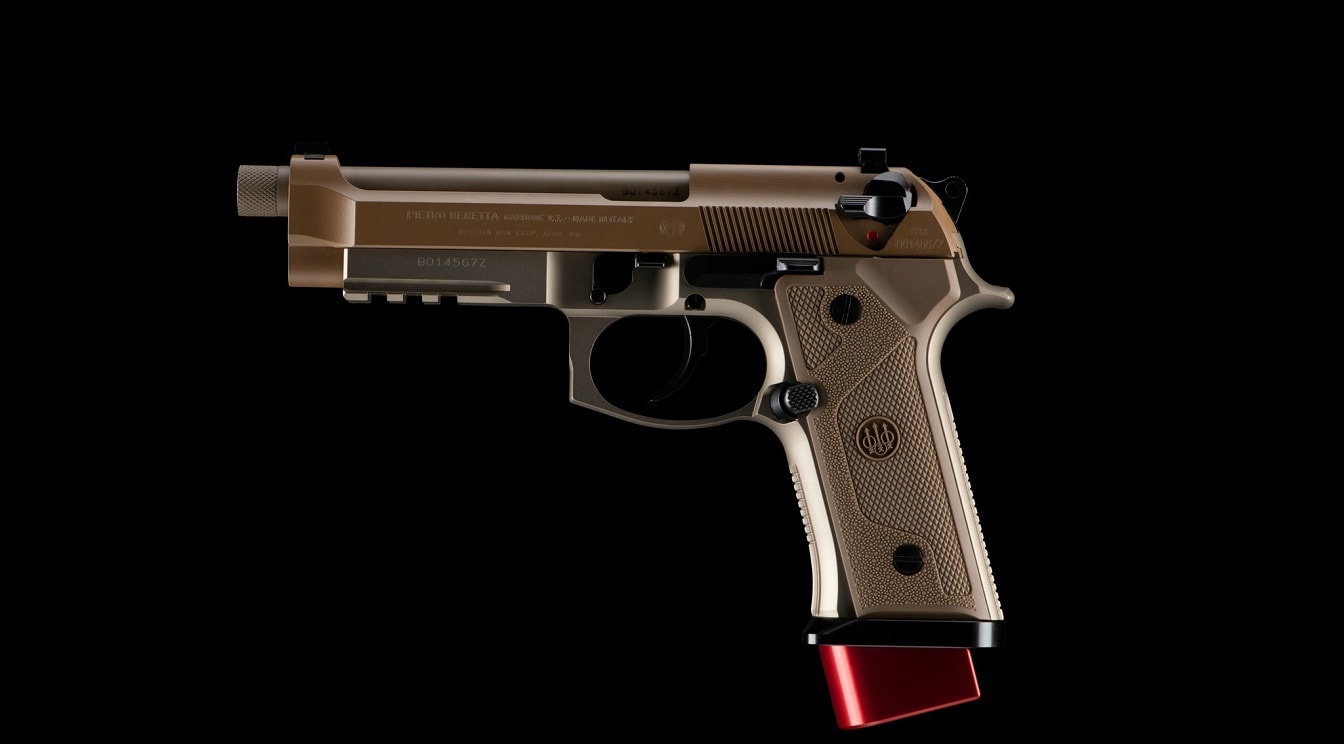History of the Beretta M9 – How the Italian Gun Maker Won the DoD Contract: In the late 1970s as part of a Department of Defense (DoD) effort to synchronize the weapons of all five branches of the U.S. armed forces, and to replace the worn-out Colt M1911 pistols then in service, the military looked at a variety of options from Colt, Smith & Wesson, Beretta, Walther, Fabrique National, Heckler & Koch. In the end, Beretta’s 92S-1 won the competition, but the result was challenged by the Army.
Another round of tests was conducted in 1984 as the Joint Service Small Arms Program competition, and it was found that the improved Beretta 92FS again performed successfully in a number of survivability tests, and it was selected as the U.S. military’s standard sidearm and given the official designation “Pistol, Semiautomatic, 9mm, M9,” and simply known as the M9.
A total of 315,930 Beretta M9 pistols were ordered in a contract valued at approximately $75 million.
History of Beretta
It was the first time that Beretta had supplied a firearm for the U.S. military, but the company had an established history working with militaries around the globe. In fact, the Italian-based company was founded in the early 16th century, and the first documented transaction from Beretta was in 1526. It is now the oldest firearms manufacturer still making guns today.
By the early 17th century, Beretta had become the second largest manufacturer of gun barrels in the world, supplying arms to countries across Europe and, soon after, to nations throughout the world. It has the distinction of having supplied weapons for every major European war since 1650.
Beretta, Still American Made
Fast forward to 1972, when Beretta USA was founded and based in Accokeek, Maryland. That allowed the company to compete for valuable U.S. DoD contracts, as the U.S. military is all but required to use domestically-produced firearms due to the Buy American Act (BAA) of 1933. It requires the federal government to buy American–made iron, steel, and manufactured goods wherever possible.
When the U.S. Army sought to replace the Colt M1911 .45 pistol in the 1980s and selected the Italian-made Beretta 92FS as the service pistol, it still required that the bulk of the production was done in the United States. The Italian gun maker has been manufacturing firearms for the American market ever since, and in 2016 even opened a new facility in Tennessee.
The Updated Beretta M9
The Italian firearms manufacturer’s run with the M9 wasn’t as long as Colt’s with the M1911, but it wasn’t for lack of effort. Upgraded as the M9A1 in 2006, it saw the addition of a one-slot Picatinny rail for mounting lights, lasers and other accessories while also featuring a more aggressive front, backstrap checkering as well as a beveled magazine well for easier reloading. The M9A1 also was offered with Physical Vapor Deposition (PVD) coated magazines that were developed to address the sandy environments found in Afghanistan and Iraq.
The pistol was again further updated as the M9A3, which included a 3-slot Picatinny rail, Earth-tone finish, and 17-round magazine. This version, introduced in 2016, also featured a removable wrap-around grip that can be swapped between the Vertec-style and former M9 style.
However, with the adoption of the Sig Sauer P320 in 2017, which was adopted as the M17 and replaced the M9, Beretta will now have to settle for the American civilian market. Given gun sales over the past two years, that’s probably not a bad thing.
Peter Suciu is a Michigan-based writer who has contributed to more than four dozen magazines, newspapers and websites. He regularly writes about military small arms, and is the author of several books on military headgear including A Gallery of Military Headdress, which is available on Amazon.com

